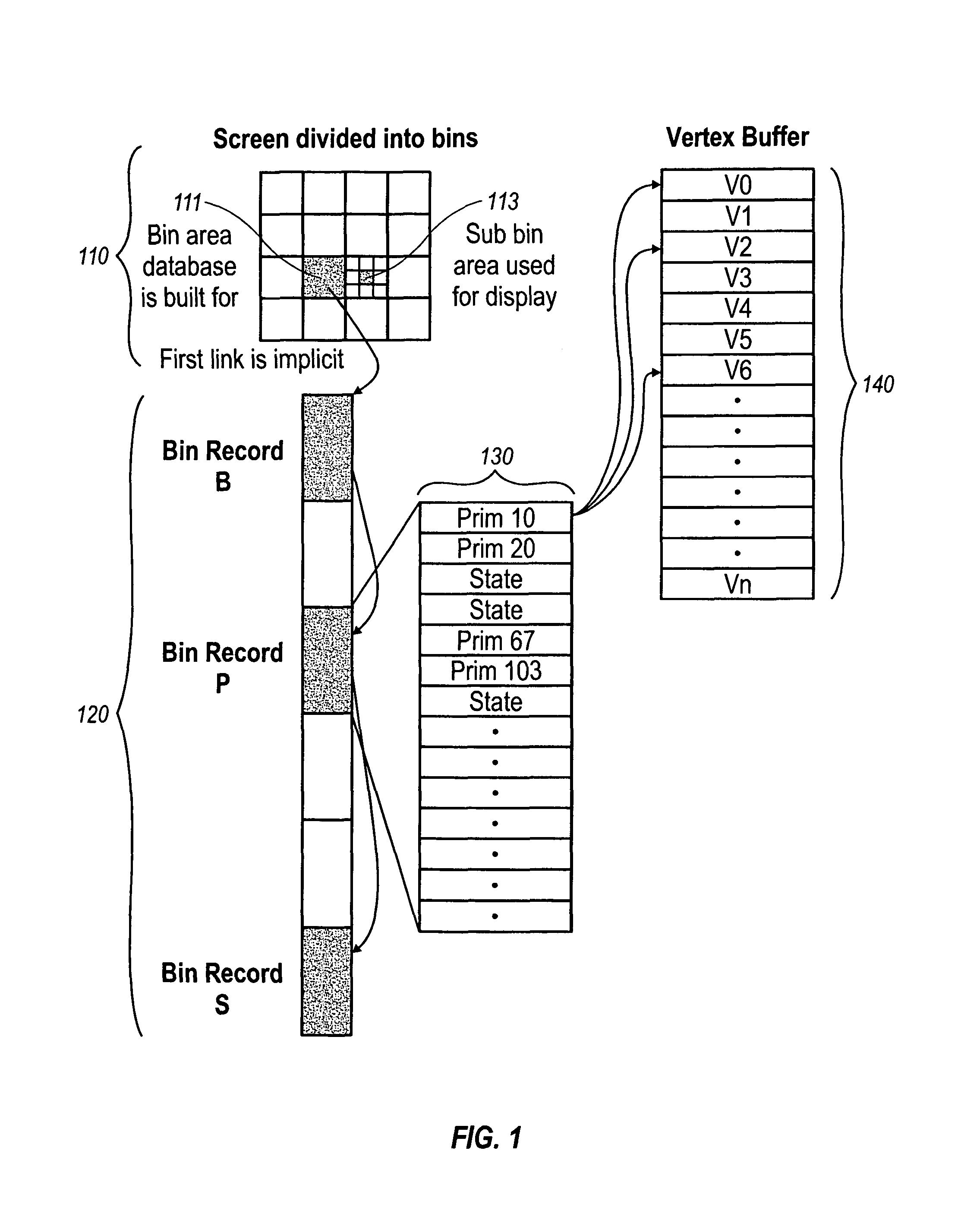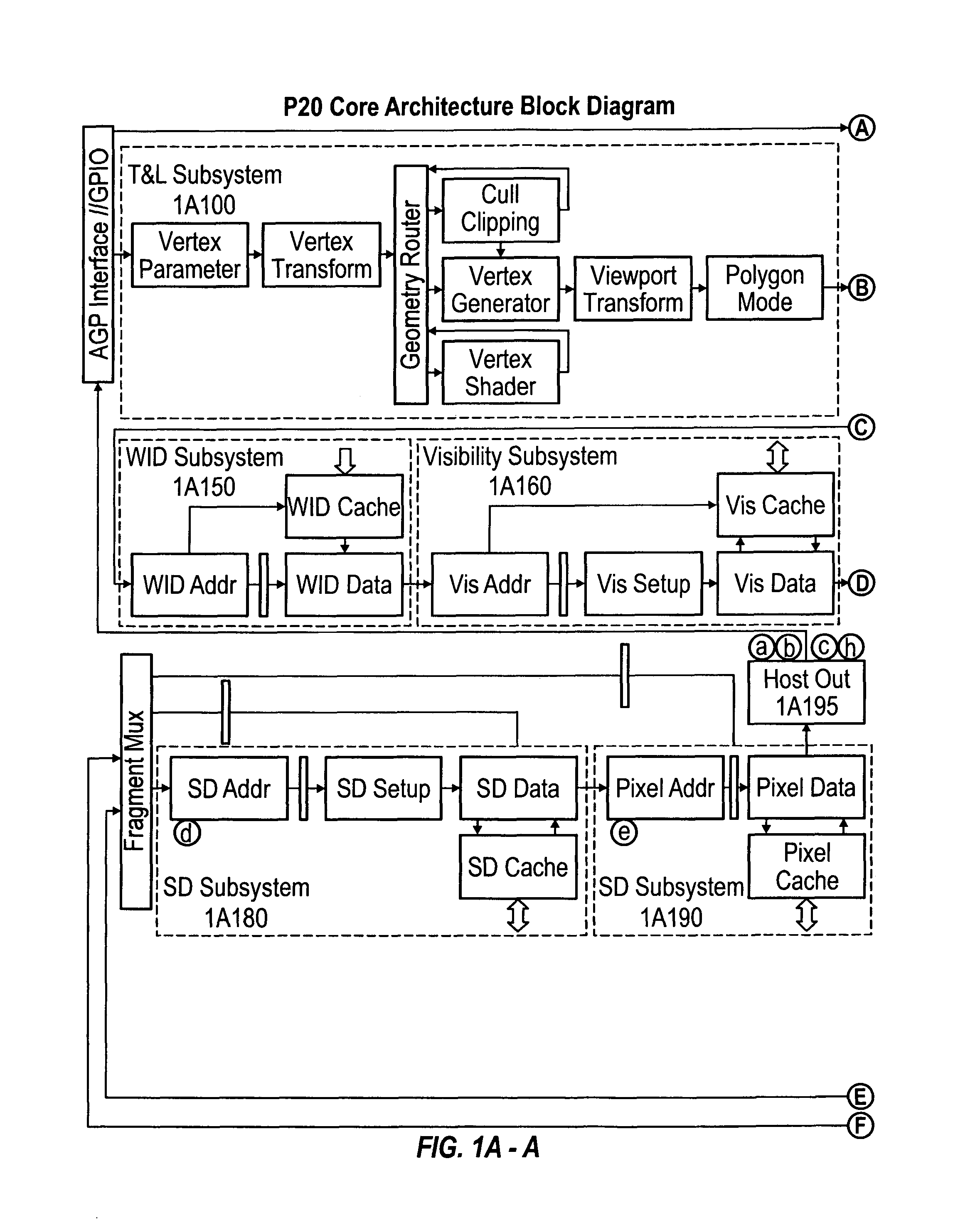Multiple simultaneous bin sizes
a bin size and bin size technology, applied in the field of computer graphics, can solve the problems of large data manipulation to be done, large memory bandwidth, and large geometry to be added, so as to add complexity, add visual interest to a scene, and improve frame rate
- Summary
- Abstract
- Description
- Claims
- Application Information
AI Technical Summary
Benefits of technology
Problems solved by technology
Method used
Image
Examples
Embodiment Construction
[0055]The numerous innovative teachings of the present application will be described with particular reference to the presently preferred embodiment (by way of example, and not of limitation).
[0056]Multiple Simultaneous Bin Sizes
[0057]The database-building and traversal (i.e. display) phases have conflicting requirements, at least within the bounds of current technology:[0058]For efficient database building, the bin size should be as large as possible so as to minimize the number of bins a primitive can overlap. Typical screen sizes are 1280×1024 so a single bin this size would be ideal from a database-building perspective.[0059]For efficient display, the z and color buffers for a bin must fit in on-chip memory (typically a cache) as the whole purpose is to save external memory bandwidth. The typical on-chip memory budget may be sufficient to hold 128×64 pixels, but antialiasing can drop down to 32×32 pixels as each pixel now has to hold multiple z and color samples. This translates...
PUM
 Login to View More
Login to View More Abstract
Description
Claims
Application Information
 Login to View More
Login to View More - R&D
- Intellectual Property
- Life Sciences
- Materials
- Tech Scout
- Unparalleled Data Quality
- Higher Quality Content
- 60% Fewer Hallucinations
Browse by: Latest US Patents, China's latest patents, Technical Efficacy Thesaurus, Application Domain, Technology Topic, Popular Technical Reports.
© 2025 PatSnap. All rights reserved.Legal|Privacy policy|Modern Slavery Act Transparency Statement|Sitemap|About US| Contact US: help@patsnap.com



